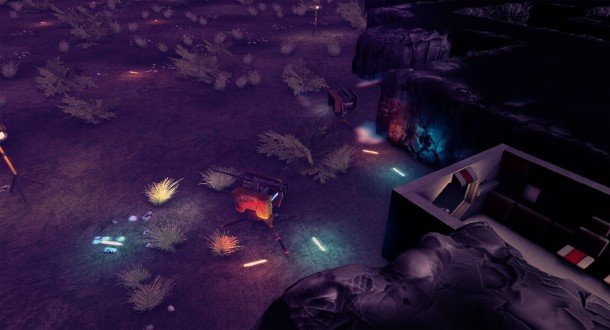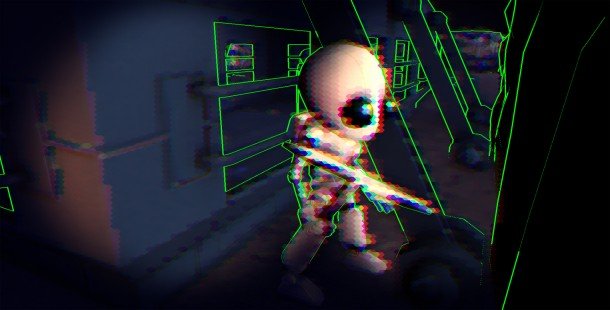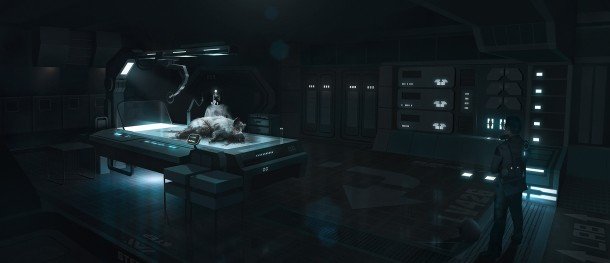Maia: Dungeon Keeper meets Dwarf Fortress on a primordial alien world
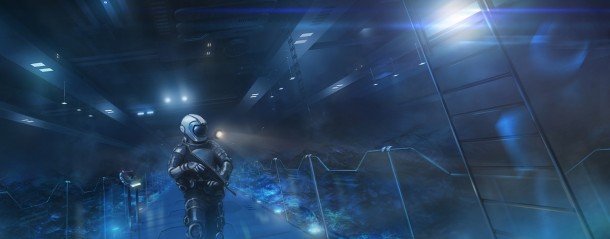
Robots who are afraid of the dark, moody colonists inspired by 70s sci-fi films, kleptomaniac aliens and self-seeding flora - all are locked together in the complex ecosystem of indie god-game Maia, currently seeking £100,000 of funding on Kickstarter .
It's an exciting prospect, not least because it taps into an aesthetic inspired by the likes of 2001 and Silent Running - masterpieces of sci-fi cinema that are among my personal favourites. Even more enticingly, Maia shares a lot of DNA with Dwarf Fortress, featuring much of the emergent drama and rich simulation you'd expect - but, insists lead dev Simon Roth, it's intended to be highly accessible, too.
“The genre's basically been dead for about ten years,” he says. “Black & White 2 came out, but I think after that it was clear that the big publishers didn't really have an interest in the god-game genre. And Dwarf Fortress came out, which I guess is god-game-ish, but obviously it's really inaccessible. Paradox Interactive have been really good, but they're catering for a northern European audience who are really excited about management games still - they kind of turn their games into spreadsheets. You can make a game that's accessible, has simulation and all this stuff - or I believe I can make this game.”
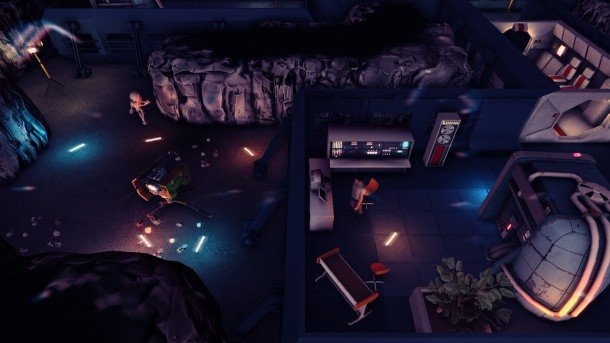
This game is apparently Maia, a god-game in debt to both Dwarf Fortress and Dungeon Keeper, capturing the simulatory detail of the former and presenting its challenges overtly in the style of the latter. The game's robot helpers are referred to as IMPs in homage to Bullfrog's fantasy management game.
“The grass in the game grows,” says Roth. “This is such a ridiculous waste of CPU time, but it's the really little details that the Dwarf Fortress community like. Because, when you're telling the story of your game, those are the details that give it so much character.”
The game's character will also be informed by Roth's wry reverence for retro sci-fi, citing 2001, Silent Running, Alien and Space 1999 as visual touchstones.
“One of the things that made these films so perfect was just this real attention to detail with the camera placement and the lighting and the sets. A lot of the characters in Maia have been slightly inspired by certain characters in the Space 1999 TV series. The chairs are from a single shot in 2001 that lasts for about half a second of a secretary sitting at her desk.”
The biggest gaming news, reviews and hardware deals
Keep up to date with the most important stories and the best deals, as picked by the PC Gamer team.
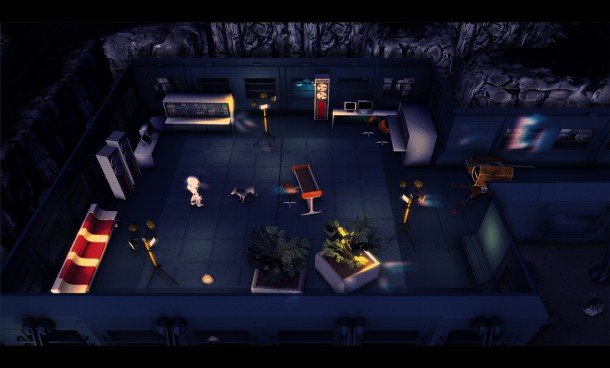
But the game's lustrous design isn't just surface - Roth is keen that his aesthetic efforts are given dual purpose in the game's action.
“I love putting really graphics effects in the game, but it always makes me feel guilty,” he says. “Adding visual polish is great, but it doesn't make the game any more fun. So I went, wait, why can't it be part of the gameplay?
If I can add millions of lights, why not make it so if you have a really brightly lit colony, the creatures from outside will actually come into your colony to see what the bright lights are? If you light it up with lots of blue lights, your colonists are going to be more passive, but they're going to work slower. And if you light it with lots of red lights, they'll be more aggressive, and you'll get more fights breaking out and this kind of thing.
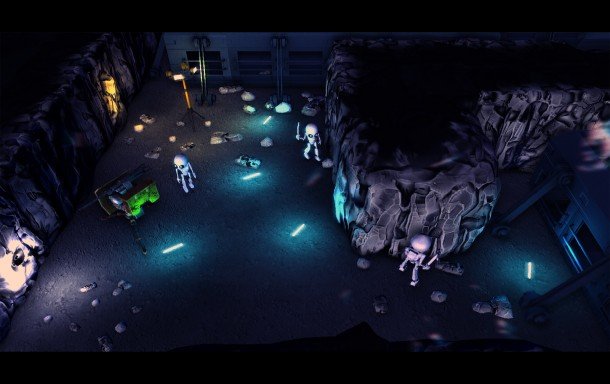
“Also, during testing, I find it quite funny to make the IMP bots - some of them, very rarely - afraid of the dark. You'll have to throw down lots of little glowsticks before they'll go dig out an area.”
Roth says the Dwarf Fortress community wouldn't forgive him if he didn't include lava, too - so necessitating fluid simulation - while an experiment with a firstperson mode, like Dungeon Keeper's Possession spell, was so popular with his community that he was forced to expand its functionality.
“It was supposed to be a small little fun feature,” says Roth of the viewing mode, which is intentionally pixellated to evoke the retro-futurism of the game's technology. “The plan is you can possess any of your robots - not the colonists - and any of the turrets. Anything that's robotic. Obviously I don't want to spend too much time on it, because it's not a core part of the game, but being able to suddenly possess something and do it yourself might keep people from getting frustrated. It's also fun to explore your own base.”
If the Kickstarter hits its stretch goal of £150,000, Roth says players will have the ability to build their own robots from a large selection of pre-made components.
“You could create, say, a guard robot - an IMP who's carrying guns - or a turret who doesn't have a gun on it and is just an observation turret.”
He's keen not to make too many promises until the Kickstarter climbs towards that mark, however. Instead, we talk about a feature that's already guaranteed: the ecosystem.
“The planet is primordial,” explains Roth. “It's been locked in a primordial state by constant meteor impacts. None of the creatures have evolved past being the kind of very early mammals that were evolving like 500 million years ago. One of them is codenamed the Magpie, and it's completely harmless to your colonists. It's about the size of a man. It's a large, slightly lizard-like creature and it runs a bit like a velociraptor from the first Jurassic Park, but it's a bit more cuddly looking. It doesn't kill anyone, all it does is it runs into your base and it steals shiny things. It's going to be really annoying, but I think that's the brilliance of it. It'll steal your lights, it'll steal any power cells that you leave around, they'll tear the guts out of any of your reactors that are running."
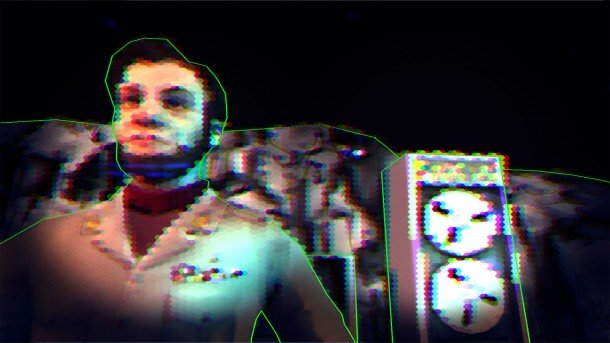
“Then there's another creature, which again isn't actively aggressive, it just sits there. It's like one of the giant sloths that used to exist a few hundred thousand years ago. It just sits there all day just eating. But if it sees one of your IMP bots, or a magpie, for absolutely no reason it will just go into a complete rage and just start smashing everything in its path and chasing after IMP bots. And so you'll probably end up having to sacrifice that IMP if it gets seen, because the IMP won't want to sacrifice itself: it will run back into your base and [the sloth-like beast] will follow and tear out your airlock. Then all shit will break loose.”
Both these creatures - indeed every lifeform in the game - plays a part of an ecosystem that can be thrown abruptly out of balance. Currently the system isn't fully operational: thanks to a lack of herbivorous creatures, it's easy for colonists to become barricaded in their buildings by the growing grass.
“Everything has to fit into this ecology, and balancing it will be interesting and fun for the player,” says Roth. “If they kill all the predators, then they'll just end up with hundreds and hundreds of little furry things running around. If they kill all the furry things then the predators are going to start looking for things to eat, and venturing into the colony.”
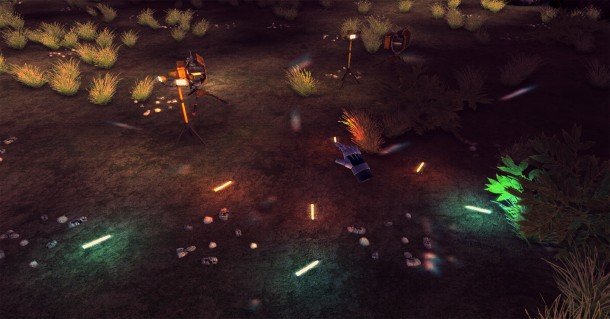
The next stage of development will focus on the colony itself, however - expanding the number of distinct characters and actions available, and fleshing out the Theme Hospital-style functionality of the bases many rooms.
That and, on imagines, constantly refreshing the Kickstarter page. Maia is edging up past £31,100 at the time of writing, with 21 days left to go - a promising start, but one which leaves Roth "not optimistic" of reaching the robot-constructing stretch goal. Have a look at his Kickstarter pitch below - maybe you'll decide to prove him a pessimist.
